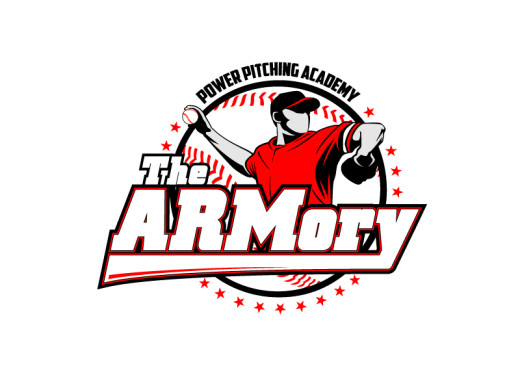Man, I’ve been busy lately.
The spring baseball season is heating up and my phone is ringing off the hook from guys with sore arms.
It’s not my regular guys.
It’s the ones I call “the dabblers”.
These are the guys who have shown some degree of interest. They’ve had their initial evaluation. Maybe they’ve even trained with us a few times. But they didn’t REALLY buy in. They didn’t commit to the entire process.
One recent call was from a 87 mph high school senior who first walked into The ARMory at the beginning of last May. He underwent a thorough physical assessment and a video analysis with his dad/coach present. I pointed out several physical and mechanical inefficiencies that he needed to clean up before he would be safe to aggressively chase velocity enhancement.
Mechanically, he had an inverted W, a forearm flyout, poor pelvic engagement and a lead leg disconnect, and significant deceleration issues. Physically he had scapular dyskinesia, a glenohumeral internal rotation deficit, a thoracic mobility constraint and a lead hip internal rotation deficit. He worked with us for about 6 sessions over 3 weeks attempting to clean up his mechanical issues. I gave him written instructions hands on demonstration of the exercises necessary to remove the physical constraints and he had a 21 day protocol to drill away his mechanical issues.
On the final day he attended class at The ARMory, I noticed the ball coming out of his hand very nicely. I shot a quick video and noted that his movement pattern was improving–not totally clean, but definitely getting better. On his second live pitch of the day I snuck behind him with a radar gun and he hit 90.1 mph. The smile on his face was priceless. We took a picture.
Then he started the summer/fall travel ball circuit and I didn’t see him for 7 months. I heard reports that he was up to 93 mph and that he was getting a lot attention from college and pro scouts. I also heard that with possible first round draft pick talk swirling around, he had taken on an adviser and committed to a highly competitive D1 program.
I was happy for the young man, but I was also scared to death.
I have seen this scenario play out too many times before.
A guy comes in and gets an eval. I give him a list of mechanical and physical constraints that might be putting him at risk and keeping him from achieving his full potential. I give him instructions on the corrective drills and exercises he needs to do to carve away the limitations. I invite him to come to our facility and train 2-5 times per week so we can work with him.
The athlete and his family are usually thrilled to have a plan. But then life happens. Their time and energy get stretched in a thousand different directions. Between travel ball and high school commitments, academic requirements, and social responsibilities and interests, they can’t find the time to get in to our facility to do necessary work to solve their disconnections and remove their physical constraints. They skip the necessary reassessments, and despite knowing what needs to be done, and understanding the danger of not doing it, they procrastinate, and neglect doing the work on their own at home or at their team’s practices.
And Then Comes “The Call”
When guys armed with just enough zeal to be dangerous fade away and don’t come in for frequent reassessments, I lay awake at night dreading the possibilities. I hope upon hope that I never get that awful phone call informing me they are injured.
Anytime anyone who has ever entered my facility–even the dabblers–sustains an injury of any severity, the local community points a finger of blame directly at me. It used to bother me, but now I just accept it as part of the business-personal discomfort exchanged for the privilege of helping young men achieve their dreams.
In this case my worst fears were almost confirmed.
About a month ago (two weeks before the high school season) I got “the call”. The young man was having significant medial elbow pain and was on the shelf. When I asked him if he had done any of the corrective drills and exercises I had given him over the summer, he said he had not. All he had really been doing all summer and fall was long tossing, throwing bullpens and pitching in games. His elbow had begun to hurt at the end of the fall, so he took some time off and rested. When he resumed throwing, the pain returned.
He’s a great kid with a ton of potential, and his dad is one of the nicest guys I’ve ever met, so my heart was breaking right along with his. I could see he and his father were very concerned. I got him an appointment with Dr. Koko Eaton, and to everyone’s delight, there was no structural damage to his elbow. We were all very excited about that!
The next time I saw him, I gave him copies of
Superhuman 1, 2, and 3 andshowed him which drills and exercises he should be doing to solve his mechanical and physical issues. When he left I texted him a detailed restorative functional movement program with a daily plan of drills and exercises to get him back on the mound in a couple of weeks. My initial impulse was to give him a written program, but it occurred to me that young people seem to have their phones in their hands and in front of their faces 24 hours per day. I figured the best way to reach him on his level and to ensure compliance was via text message.
Here is the plan I sent him:
Here’s a guide for gradual return to throwing while refining your movement pattern to reduce the risk of future injury.
Not set in stone, so feel free to modify to meet your needs.
Dynamic warmup=Don’t throw a ball until your underwear is wet.
Warmup at your own pace when throwing.
Monday
Dynamic warmup
15 pitches. 10 FB. 3 BB. 2 Ch. 70% from stretch
IYT , scap push-ups, dog position and side lying thoracic mobs, sleeper stretch, chicken wing stretch
Tuesday
Dynamic warmup
6 reverse pronation, 6 pronation, 6 walking torque, 6 jump backs, 6 quick picks. 3 45 degree hookems, 3 walking box squats
IYT , scap push-ups, dog position and side lying thoracic mobs, sleeper stretch, chicken wing stretch
Wednesday
Dynamic warmup
20 pitches. 12 FB, 4 BB, 4 CH. 70% from stretch
IYT , scap push-ups, dog position and side lying thoracic mobs, sleeper stretch, chicken wing stretch
Thursday
Dynamic warmup
6 reverse pronation, 6 pronation, 6 walking torque, 6 jump backs, 6 quick picks. 3 45 degree hookems. 3 walking box squats
IYT , scap push-ups, dog position and side lying thoracic mobs, sleeper stretch, chicken wing stretch
Friday
Dynamic warmup
25 pitches. 15 FB, 5 BB, 5 CH. 70% from stretch
IYT , scap push-ups, dog position and side lying thoracic mobs, sleeper stretch, chicken wing stretch
Saturday
Dynamic Warmup
6 reverse pronation, 6 pronation, 6 walking torque, 6 jump backs, 6 quick picks. 6 45 degree hookems, 6 walking box squats
IYT , scap push-ups, dog position and side lying thoracic mobs, sleeper stretch, chicken wing stretch
Sunday
OFF
Monday.
Dynamic warmup
3 reverse pronation, 3 Pronation, 3 walking torque, 3 jumpbacks, 3 quick picks.
IYT , scap push-ups, dog position and side lying thoracic mobs, sleeper stretch, chicken wing stretch
Tuesday game:
30 or so pitches
Continue with drills–6 reps each on off days. Take off 2 days before an outing and do a 3 rep set of the drills the day prior to pitching.
Add 10 pitches per outing until you are back to normal
If you have any pain, stop and call me.
This is ONLY a guide. Listen to your arm. If you feel you need a day off, take it.
Ice is not necessary unless you have overt pain.
An amazing thing happened with his corrective drills and exercises this time.
He did them.
It didn’t go as perfectly as planned. He had a few days where his arm hurt a little and he had to shut it down. His progress was delayed, and we had to tweak the plan.
He was deeply involved in his high school season, so he couldn’t come to the ARMory to train. But every few days he sent me a text updating me on his progress and asking questions. The quality of his questions gave me encouragement that this time he was all in.
Then today I got this text.
Now here is what will happen next.
This young man will have a fantastic senior year. He will dominate his league and garner all-conference and all-state honors. He’ll take his team on a deep playoff run, possibly winning a state championship. His velocity will touch 95 mph and in June he will be drafted in the first or second round. He will have a tough but enviable decision to make as to whether he will sign or go to college. Hopefully, he’ll take advantage of my offer to help him manage pain, and he’ll undergo frequent reassessments and continue his drills and exercises to suppress all the possible contributors to injury. If he does, he’ll play this game for a LONG time and make a ton of money doing it.
I love my job.
NOTE TO ALL PITCHERS WITH PAIN
Check out our new remote video lesson program. The video analysis represents 1/3rd of our total assessment, and it’s the only way to find inefficiencies in your movement pattern that might be contributing to arm pain. loss of command, or lack of velocity. I am honored to be able to review your video for you. I’m sure I’ll be able to find some significant opportunities for improvement.
Click here: and upload the video you want me to see. I only need 2 pitches—one face-on at a 90 degree angle, and one from the front (or sort of the front….I mean, don’t get hit in the head or anything). Within the following 7-10 days, I’ll run it through my MotionPro Software and build a video lesson. Then I’ll upload it to a drop box file and send you the link. You can download it and immediately get started on making the necessary adjustments. Please be sure to fill out the associated questionnaire and identify the location of any pain, weakness, fatigue, tightness (or whatever you want to call it). The location of your pain tells me a lot about where the most glaring inefficiencies might be.There is a fee for this service, but I promise you it will be worth it.
Until next time,
Let me help you with your pain.











Leave a Reply